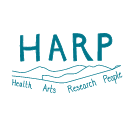It is often said that arts and health projects need ‘more funding’, and ‘more sustainable funding’. But knowing how, when and how much to invest in arts and health projects can be challenging for investors.
In an online session facilitated by the Wales Arts, Health and Wellbeing Network, HARP-supported teams and investors in arts and health discussed the types of investment that arts and health innovation projects need at different stages in their life cycles.
Here are a few takeaways from that discussion…
- More long-term funding would help ensure the sustainability of proven arts and health interventions
Nia Skyrme, producer at Theatr Genedlaethol Cymru and coordinator of HARP-supported project ‘Ar Y Dibyn’ said: “We have found many opportunities for funding in Wales and outside of Wales, but it has been challenging. We hope that after our project evaluation we will be in a better position to apply for longer-term funding and that this, in turn, will give us the time and space to take action without having to apply for money for projects one at a time.”
Katherine Harri, head of fundraising at Forget-me-not-chorus, which led HARP project ‘Digital Threads’, said: “Longer-term funding is so powerful as it allows a service to become embedded in our offer in a particular setting, to grow in scale so that health partners can rely on its presence as part of the overall package. It allows a project to be tested, to be refined and to be scaled.”
- Flexibility from investors and open dialogue between them and the arts and health project team are crucial to delivering the best results
Katherine Harri said: “The last couple of years particularly have demanded flexibility right across the board from everybody artistically, developmentally, and in a fundraising and planning sense. [Through HARP we were] constantly assessing and evaluating, adapting and changing, and there was space to do that. Robust evaluation allows you to present a much stronger case for ongoing funding because you can present what you have learned, and what worked and what didn't, and demonstrate that the project is ready to be scaled up if that's what you want.”
- Arts investors simply don’t have enough time or money.
David Cutler, director of The Baring Foundation, said: “The reality is that we don't have remotely the amount of money that we want to spend on arts and health.
“Long-term funding is really good. [But], it does affect the maths. We tend to give grants for two or three years. If all of our grants were for five years, which is a reasonable amount of time, we would be giving half of the number of grants and we already tend to turn down four out of five, or nine out of 10, grants. That's the frustration.”
- There are different ways to ‘scale’ an arts and health intervention.
Victoria Hume, director of the Culture, Health and Wellbeing Alliance, said: I worry about the word "scale" because I think it puts pressure on organisations that don't need to be huge. There's an assumption we need to grow in order to survive and I don't think that is necessarily true. The sector is localised and embedded and specific.
“I think it is more about how ideas spread through… highly committed small organisations and individuals that have always driven this work. Then it is about fostering the conditions for more of those small organisations to flourish and do more than survive but to feel confident they're not going to collapse every six months. I think that's the situation we have now where people are jumping from grant to grant.”
Rosie Dow, HARP programme manager, said: “There are many ways of scaling…many models of it. It is not just about one organisation having one idea and then all of a sudden they're in every town in the country. The Singing for Breathing moment has grown into a movement and there are lots of different organisations doing it but they all share a knowledge base, they network together. That shows the importance of creating fora where people can come together.”
- Change is on the horizon, but it will take time.
Sally Lewis, of the Arts Council of Wales, said: “During COVID we saw a shift, because when people were isolated it was creative activities that [many] turned to for meaning and connectivity. The whole prevention agenda [in Wales] is big. I think that [things are] shifting. It never shifts as quickly as we would like or want it to. We have to be patient. There's a big opportunity coming down the track for social prescribing in Wales right now in terms of policy. We have to grab it and make sure it works for the arts and for the people of Wales.”
The art of investment event was co-hosted by HARP and Wales Arts, Health and Wellbeing Network.
Speakers were: Nia Skyrme (Theatr Genedlaethol Cymru), Katherine Harri (Forget Me Not Chorus), Sally Lewis (Arts Council of Wales), David Cutler (The Baring Foundation), Victoria Hume (Culture, Health and Wellbeing Alliance)
You can watch the full session below.

